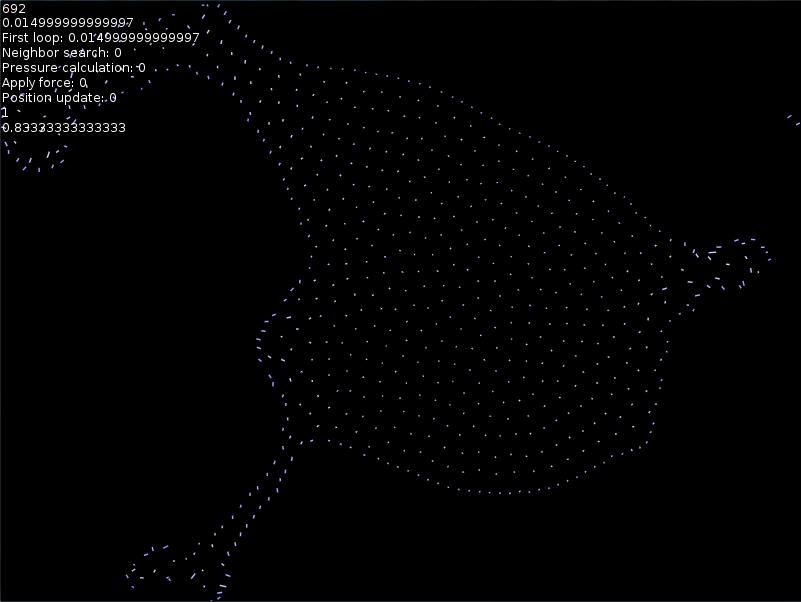rexjericho wrote:I implemented an alternate method of fluid-object interaction when writing my own SPH fluid simulation that seemed to work well.
Thank you
I love your blog and your game looks awesome too

rexjericho wrote:I don't mind at all.
Merged and updated.
I added the boundary as a post update function and I loved the way the fluid moved when the gravity was applied to the delta table of each neighbor so I added that too as a new type of gravity/water (press "w" to change between gravity types).
rexjericho wrote:I tried modifying liquid_bfr myself to make some optimizations, but they did not have an effect on framerate when simulating 400 particles. The modifications did have a slight impact when simulating a larger number of particles. I had 16 fps before vs 24 fps in the after version with 1700 particles. I wasn't able to measure a difference in FPS until simulating over 1500 particles.
A little FPS improvement is better than no improvement at all, I'll look into your liquid_after to see what you did and I'll try to implement it in the current code.
rexjericho wrote:It will be cool to see this fluid interact with Box2D rigid bodies when you get that working.
I implemented an alternate method of fluid-object interaction when writing my own SPH fluid simulation that seemed to work well. The objects were treated as a collection of fluid particles packed together into a shape. The object particles interact with regular fluid particles as if they were a fluid, except that their motion is controlled by an external force instead of by the force of the fluid. Here's a video showing what I mean:
https://www.youtube.com/watch?v=LIKSFU_4YTo
I also thought about that but I never got into coding it because that'd probably have a major impact on performance due to simulating a huge quantities of particles so I decided to go with another approach, I'll call a
queryBoundingBox to the objects on screen with a function that sorts the particles that are inside AABBs by using the grid, then I simply check if they are inside object by testing a point, if they are I'll run a raycast from the current point to the last point, see where it intersect with the object, move the particle to the intersection point and change velocities with the normal of the the object side that the particle intersected with, based my idea on
this post.
